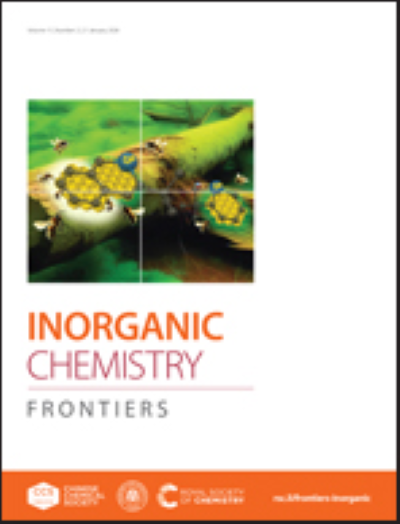Electroreduction of N2 and CO2 to urea via Pd-assisted hydrogenation on MOFs-derived CeO2 nanosheets
IF 6.1
1区 化学
Q1 CHEMISTRY, INORGANIC & NUCLEAR
引用次数: 0
Abstract
Conversion of CO2 and N2 to urea by electrocatalytic methods under ambient conditions is a promising alternative to conventional urea synthesis method. However, the inherent adsorption and activation characteristics of inert reaction gas molecules and the kinetics of hydrogenation after C-N coupling result in the challenge of electrocatalytic synthesis of urea. In this work, the electrocatalytic conversion of CO2 and N2 to urea by Pd-assisted hydrogenation on CeO2 nanosheets derived from metal-organic framework materials (MOFs) under mild conditions was achieved urea yield rate with 83.89 µg h-1 mg-1cat. and Faradic efficiency (FE) of 11.92%. Combined experimental and theoretical computational analyses confirmed that the defective structures present in the prepared catalysts were conducive to the stabilization and activation of adsorbed CO2 and N2, and due to the effective promotion of hydrolysis dissociation by Pd, which provided abundant source of protons for further hydrogenation after C-N coupling. This work provides some insights into the promotion of hydrolysis dissociation to optimize the hydrogenation energy barriers after C-N coupling for electrocatalytic synthesis of urea.在mofs衍生的CeO2纳米片上通过pd辅助加氢将N2和CO2电还原成尿素
利用电催化方法在常温条件下将CO2和N2转化为尿素是一种很有前途的替代传统尿素合成方法。然而,惰性反应气体分子固有的吸附和活化特性以及C-N偶联后的加氢动力学给电催化合成尿素带来了挑战。在温和条件下,采用pd辅助加氢方法在金属有机骨架材料(MOFs)制备的CeO2纳米片上电催化CO2和N2制尿素,尿素收率为83.89µg h-1 mg-1cat。法氏效率(FE)为11.92%。结合实验和理论计算分析证实,所制备的催化剂存在缺陷结构,有利于吸附CO2和N2的稳定和活化,并且由于Pd有效地促进了水解解离,为C-N偶联后的进一步加氢提供了丰富的质子来源。本研究为电催化合成尿素中C-N偶联后促进水解解离以优化加氢能垒提供了一些见解。
本文章由计算机程序翻译,如有差异,请以英文原文为准。
求助全文
约1分钟内获得全文
求助全文
来源期刊

Inorganic Chemistry Frontiers
CHEMISTRY, INORGANIC & NUCLEAR-
CiteScore
10.40
自引率
7.10%
发文量
587
审稿时长
1.2 months
期刊介绍:
The international, high quality journal for interdisciplinary research between inorganic chemistry and related subjects
 求助内容:
求助内容: 应助结果提醒方式:
应助结果提醒方式:


